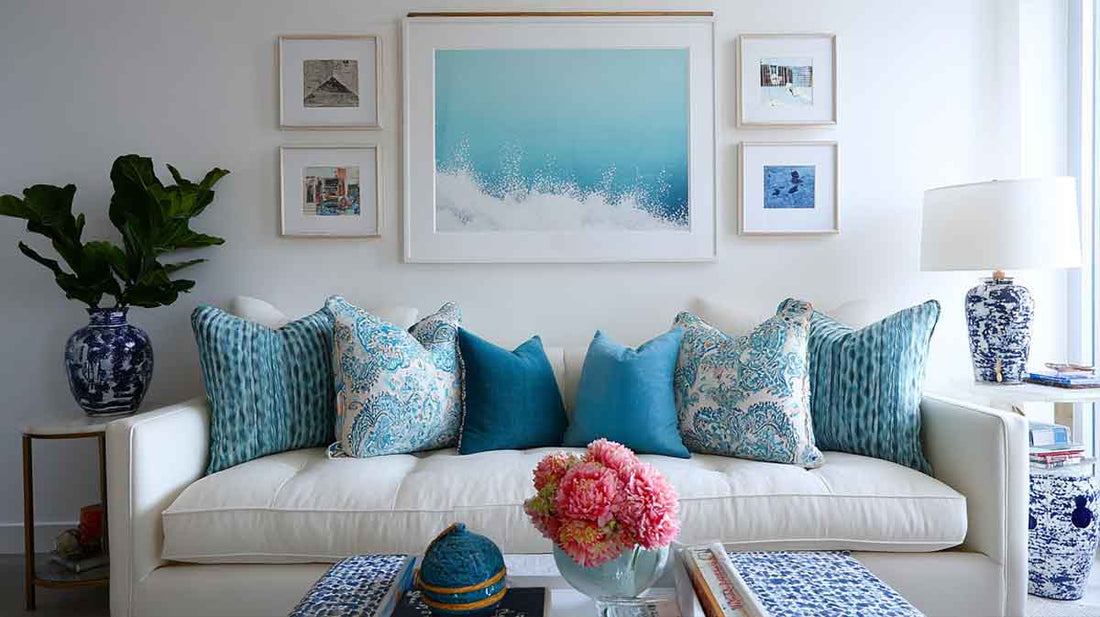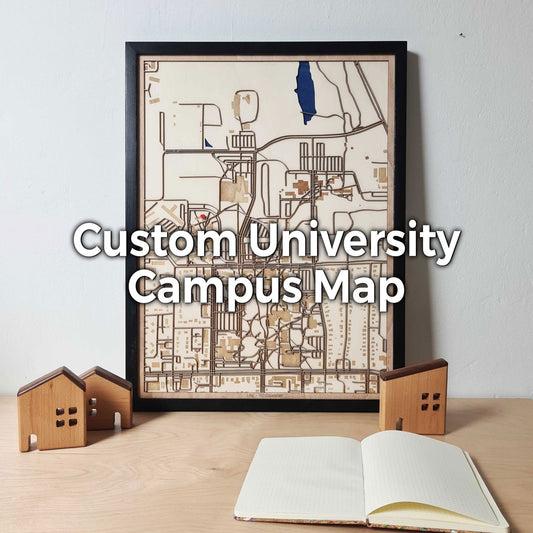Decorating the space above your couch is one of the most impactful design decisions you can make in your living room. This area naturally draws the eye, and when styled correctly, it becomes the centerpiece of the entire space. The first thing to remember is that whatever you hang or display above your sofa should feel connected to it—it’s not about filling empty wall space, but about creating harmony between furniture and décor.
A common mistake is choosing artwork that’s too small. As a rule of thumb, the decoration above your couch should measure at least two-thirds of the sofa’s width. This ensures proportion and balance. If you prefer a gallery wall, think of it as one large composition rather than a collection of unrelated frames. Symmetry and structure help keep the look cohesive.
Don’t feel limited to just art prints, though. A mirror can add depth and brightness, especially in smaller rooms. Floating shelves allow you to layer books, plants, and decorative objects for a personal touch. Textiles like woven wall hangings or macramé add texture and warmth. For something timeless and truly unique, a crafted wooden map makes a stunning centerpiece, combining natural texture with personal meaning. The key is choosing something you’ll enjoy seeing every day, since this wall often becomes the most visible part of your living room.
Where to hang artwork above a couch?
Once you’ve chosen the right piece, placement is just as important as selection. A golden rule followed by interior designers is to hang artwork so that its center is at eye level, usually around 57–60 inches from the floor. This ensures comfort when viewing, and keeps the art from feeling disconnected. If your ceilings are particularly tall, you may adjust slightly higher, but eye-level placement is the standard.
Equally important is the distance between the sofa and the bottom edge of the artwork. Hanging a picture 6–8 inches above the back of the sofa is ideal. Too high, and it feels like the artwork is “floating.” Too low, and it risks looking cramped. Keeping this gap consistent helps create a seamless visual flow from furniture to décor.
Remember, bigger is usually better than too small. If your artwork or mirror is large, center it properly over the sofa so it feels like a strong anchor. If you’re working with smaller pieces, arrange them in a structured grid or cluster so that together they form the impression of one substantial artwork. Play around with paper cutouts or painter’s tape on the wall before committing—it’s a simple trick that lets you test proportions and spacing without hammering a single nail.

Do you center a picture over a couch or on the wall?
This is one of the most common questions, and the answer is clear: always center with the sofa, not the wall. The couch is the dominant piece of furniture in the room, and any decoration above it should align with it. If you center a picture with the wall instead, the arrangement will feel off-balance, especially if your sofa isn’t placed perfectly in the middle of the wall.
Imagine walking into a living room where the sofa is slightly to the left of the wall, but the artwork is placed dead center of the wall itself. The result feels awkward, as though the furniture and decoration don’t belong to the same conversation. Aligning your art with the sofa instead creates harmony and a natural visual anchor.
That being said, there’s room for personal judgment. If your sofa floats in the middle of a large, open-plan space, centering artwork with the wall may sometimes make sense. However, in most traditional layouts, the sofa defines the focal point, and the wall décor should respect that. At the end of the day, trust your eye—stand back, look at the room as a whole, and adjust until the balance feels natural.
How many walls in a room should be decorated?
When decorating, less is often more. Not every wall in your living room needs to carry artwork, mirrors, or shelving. In fact, leaving some walls bare allows the decorated walls to shine more. A good rule of thumb is to focus on two or three main walls: the one behind the sofa, one behind or around the TV, and possibly an accent wall in a dining or reading nook.
Decorating every single wall risks making the room feel cluttered and heavy. The eye needs breathing space, just like you need pauses in music or rest in conversation. Empty walls can actually highlight the beauty of the areas you’ve chosen to decorate. Think of it as curating your room rather than filling it.
Personal touches can be sprinkled strategically without overwhelming the room. A family gallery wall might look perfect above the sofa, while a simple oversized mirror may do the job on another wall. One wall might be completely blank, painted in a calming color to let the eye rest. Balancing these choices gives your living room sophistication and flow.
How far above furniture should you hang a picture?
This is one of the easiest rules to follow: keep the bottom of the artwork 6–8 inches above the top of the sofa. This small gap creates just enough breathing space so the pieces don’t touch, while keeping them visually connected. Too much space between the sofa and the picture makes them feel unrelated, while too little creates crowding.
Think of it as creating a conversation between your furniture and your décor. They should be close enough to interact, but not so close that they’re competing for attention. This distance works equally well for mirrors, wall hangings, or even shelving. If you’re styling a gallery wall, apply the same logic to the bottom row of frames.
Don’t be afraid to adjust slightly based on the height of your sofa’s backrest. If your couch is particularly tall, you may need to increase the distance slightly; if it’s low-backed, the gap may shrink. What matters is that the final arrangement feels balanced when you step back and view the room as a whole.
Should sofa be in middle of room or against wall?
Where you place your sofa depends on both the size of your room and the way you use it. In smaller spaces, placing the sofa against the wall is often the most practical solution. It opens up the center of the room and allows for easy movement, while keeping the layout simple. This arrangement works well in apartments or compact living areas.
In larger rooms or open-plan layouts, however, floating the sofa in the middle can create a sense of intimacy and structure. For example, placing a sofa in the middle of a big space can help define the living area and separate it from the dining or kitchen zone. This technique creates “zones” in your home and can make a large room feel cozier.
There’s no single rule—you should let the flow of the room guide you. Think about how people move through the space, where natural light comes in, and which wall you want as a focal point. Whether against the wall or in the middle, your sofa should feel like the anchor of the room, and the decoration above it should reinforce that anchor rather than compete with it.





